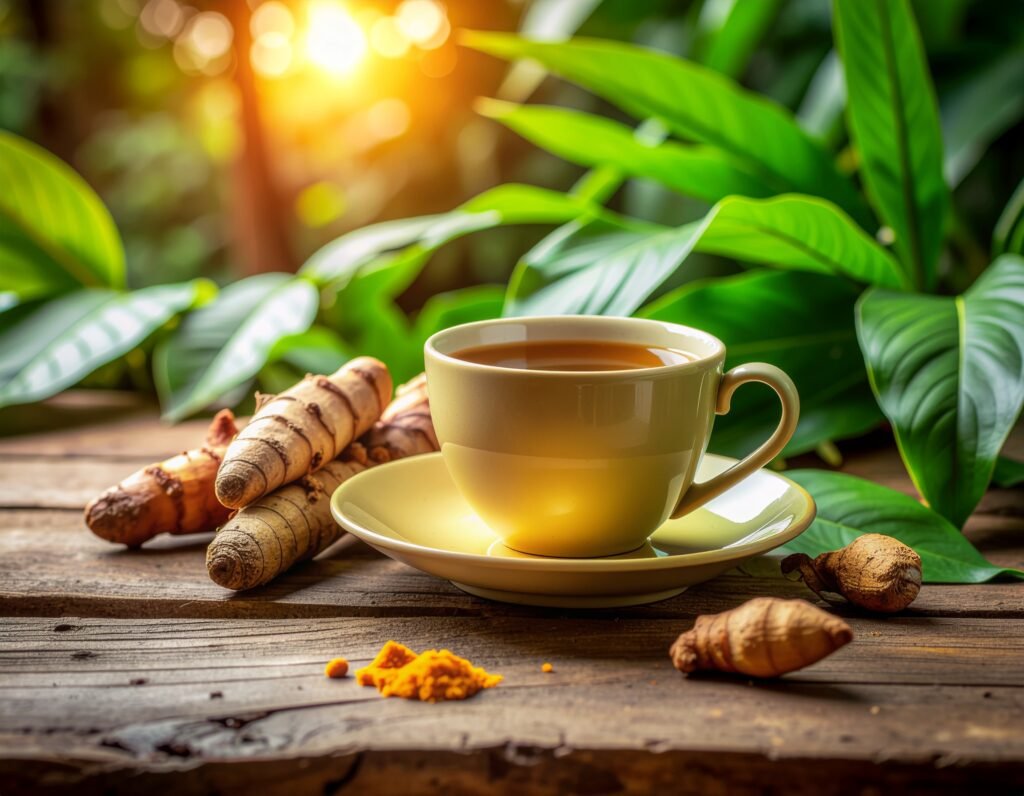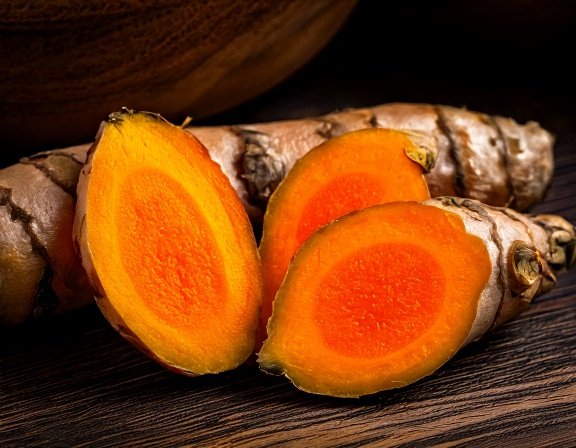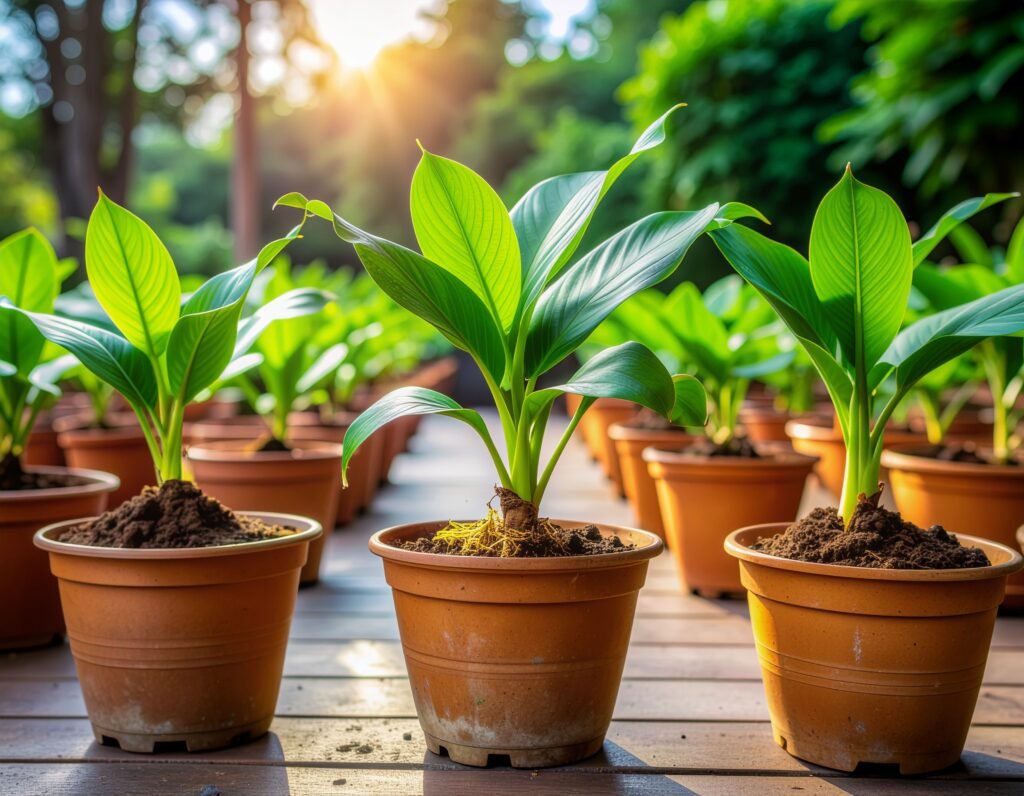
Turmeric Root Benefits: How to Grow, Harvest & Use for Natural Inflammation Relief
Turmeric root, often called “golden root,” has been a cornerstone of healing for thousands of years in Ayurvedic and traditional medicine. Renowned for its vivid color and powerful anti-inflammatory benefits, turmeric is both a culinary treasure and a natural remedy for pain and inflammation. With its easy-to-grow nature, you can cultivate this healing plant at home, ensuring a fresh supply for teas, tonics, and cooking. In this post, we’ll guide you through the process of growing turmeric, harvesting for maximum potency, and making the most of its inflammation-fighting properties.
“Let food be thy medicine and medicine be thy food.”
— Hippocrates


Get Your Free Kit
MoveWell Daily: Plant & Nutrient Powered Joint Formula
- Features Turmeric Curcumin, Boswellia Serrata, Type II Collagen, Hyaluronic Acid
- Traditional botanicals plus modern joint nutrients
- No harsh chemicals—just science-backed natural relief
How to Grow Turmeric at Home for a Healing Harvest
Turmeric is a tropical plant that thrives in warm, humid conditions but adapts surprisingly well to indoor and container gardening. Begin by sourcing fresh, organic turmeric rhizomes. Soak the rhizomes overnight, then plant them in rich, well-drained soil with the buds facing upward.
- Choose the Right Spot: Turmeric loves warmth—select a location with indirect, bright light or partial sun. Indoors, a south-facing window is ideal.
- Soil & Watering: Use loamy, nutrient-rich soil and keep it consistently moist (but not waterlogged). Turmeric roots rot easily in soggy soil.
- Container Size: Use a deep container, at least 12 inches, to allow rhizomes plenty of space to multiply.
- Growth Time: Turmeric needs patience—8–10 months to mature fully for harvest.
- Pro Tip: Mulch around plants to retain moisture and suppress weeds, giving turmeric the best environment for healthy growth.
Harvesting Turmeric for Peak Potency
The moment your turmeric leaves start to yellow and die back—usually 8–10 months after planting—it’s harvest time.
Carefully loosen the soil and gently pull up the entire plant, freeing the rhizomes from the roots.
- Stop watering two weeks before harvest to allow the soil to dry slightly.
- Use a hand fork or trowel to gently dig around the base of the plant.
- Shake off excess soil and separate the rhizomes from the main stalk.
- Rinse thoroughly and let them air dry before use or storage.
- Storage Tip: Store fresh turmeric in the fridge for up to three weeks, or freeze sliced rhizomes for longer shelf life.


Insta Soothe: Capsaicin, Arnica & Turmeric Relief Cream
- Features plant-powered actives: Capsaicin, Arnica, Turmeric, Boswellia Serrata
- Menthol and MSM for soothing coolness and mobility
- No harsh chemicals—just natural comfort for your joints
Turmeric in Your Kitchen and Medicine Cabinet
Turmeric is one of the most versatile healing spices you can keep in both your pantry and apothecary. Its warm, golden hue signals a powerhouse of antioxidants and anti-inflammatory compounds—especially curcumin—that work to protect cells, soothe joints, and support the body’s natural healing processes. Whether enjoyed in food or used topically, turmeric brings both flavor and function to your daily wellness rituals.
Turmeric Tea (Golden Wellness Brew)
A simple, soothing drink that warms the body and calms inflammation.
- 1 cup water
- ½–1 tsp fresh grated or dried turmeric root
- 1 pinch black pepper (boosts absorption up to 2,000%)
- Optional: ½ tsp fresh ginger, 1 tsp honey, and a squeeze of lemon
Instructions: Simmer all ingredients for 10–15 minutes, then strain and sip warm. This tea helps soothe digestion, joint stiffness, and cold-weather sluggishness.
Golden Milk (Evening Anti-Inflammatory Tonic)
- 1 cup warm plant milk (almond, oat, or coconut)
- ½ tsp turmeric powder
- 1 pinch black pepper
- Optional: ¼ tsp cinnamon or cardamom and 1 tsp honey or maple syrup
Heat gently, whisking until smooth. Sip before bed for a relaxing, restorative ritual that supports joint comfort and deep sleep.
Cooking with Turmeric
Turmeric’s earthy warmth enhances a wide range of dishes while infusing them with healing power. Add freshly grated or powdered turmeric to:
- Curries, stews, and soups for immune and digestive support
- Rice or quinoa for golden color and antioxidants
- Eggs and roasted vegetables for added depth and balance
- Smoothies or juices for a subtle anti-inflammatory boost
Culinary Tip: Combine turmeric with healthy fats—like olive oil or coconut oil—and black pepper to maximize absorption and bioavailability.
Topical Uses for Relief
Turmeric’s natural anti-inflammatory and antibacterial properties make it a soothing ingredient for external care too.
Turmeric Healing Pastes
Joint or Muscle Paste
Ingredients:
• 1 tsp turmeric powder
• 1 tbsp coconut oil
• Pinch of black pepper (enhances absorption)
How to Use: Mix into a smooth paste and apply to sore joints or muscles. Leave on for 15–20 minutes, then rinse gently with warm water. Wear gloves or old clothing to avoid turmeric stains.
Skin Soother
Ingredients:
• 1 tsp turmeric powder
• 1 tbsp aloe vera gel or plain yogurt
How to Use: Apply a thin layer to clean skin to calm redness, irritation, and dullness. Leave on for 10–15 minutes and rinse gently. Helps brighten tone and reduce inflammation naturally.
Safety Tip: Always do a patch test first—turmeric can temporarily stain skin or fabric!
Quick Wellness Insight
By incorporating turmeric daily—whether in your morning smoothie, dinner recipe, or evening tea—you’re supporting your body’s natural anti-inflammatory response, immune resilience, and overall vitality. A little golden spice truly goes a long way toward lifelong wellness.
How to Use Turmeric
- Turmeric Tea: Simmer fresh or dried turmeric with black pepper (to enhance absorption), ginger, and honey for a soothing, anti-inflammatory drink that supports joints and digestion.
- Golden Milk: Blend turmeric with warm plant milk, cinnamon, and a touch of natural sweetener for a calming, golden night tonic.
- Cooking: Add grated or powdered turmeric to curries, rice, soups, and smoothies for both vibrant flavor and whole-body healing benefits.
- Topical Uses: Create a paste for sore joints or skin irritation by mixing turmeric powder with coconut oil. Always patch test first to avoid staining or sensitivity.
Tip: Combine turmeric with a source of fat (like coconut milk or oil) and black pepper to maximize absorption of curcumin—the compound responsible for its anti-inflammatory power.
Active Compound
Curcumin – Turmeric’s main bioactive ingredient, scientifically proven to reduce inflammation and support overall joint and immune health.
Safety & Dosage Tips
While turmeric is generally safe, high doses or concentrated supplements may not be suitable for everyone. Always consult your healthcare provider if pregnant, nursing, or taking medication.
- Safe Use: A typical safe intake is ½–1 teaspoon of fresh or powdered turmeric per day, combined with black pepper for best absorption.


Did You Know?
Ready to Embrace Natural Relief?
Subscribe to Health Intel Daily for the best home remedies, plant-based recipes, and expert gardening guides—delivered to your inbox so you can live healthier, naturally.
Subscribe